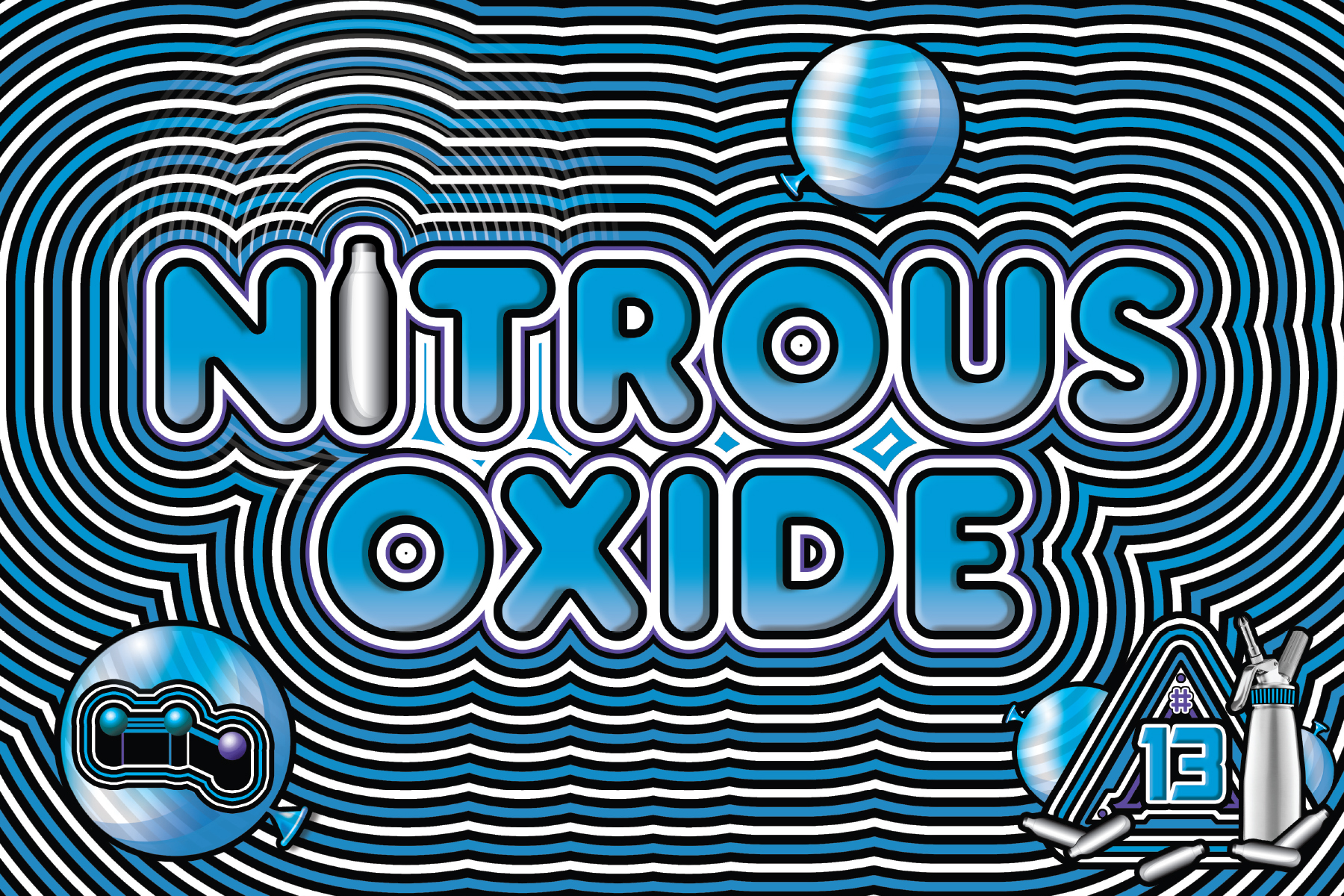
Nitrous Oxide
Post Date: February 3, 2014
Rachel Clark2023-03-28T16:20:07-07:00
Nitrous Oxide
What is nitrous oxide?
- Nitrous oxide (a.k.a. “nitrous”) belongs to a class of drugs called dissociative anesthetics, commonly referred to as dissociatives.
- Dissociatives separate perception from sensation. Other drugs in this category include ketamine, PCP, and DXM.
- Nitrous oxide exists naturally in our atmosphere and as a byproduct of many life forms. It’s been used medically as a mild anesthetic (in combination with oxygen) for over a century, most commonly in dentistry.
What are the effects?
- Nitrous produces a short, trancelike “floaty” feeling in which perception is altered and the body may feel tingly or light. Nitrous is anxiety reducing and mildly to moderately euphoric.
- The effects of nitrous come on within seconds and last less than a minute, two at most. Repeated inhalations of nitrous oxide can extend and intensify the experience.
- Nitrous has significant auditory effects. It’s common for things to sound metallic, have lots of reverb, or take on a “wah wah” distortion.
- Despite the nickname “laughing gas,” uncontrollable laughter on nitrous is quite rare.
- With very high doses (many repeated inhalations), consumers may experience a full-blown out of body experience and/or visual hallucinations.
What is a typical dose?
- Nitrous is most often sold in small, pressurized canisters that are used for making whipped cream (often known colloquially by the brand name “Whip-Its”), although it can also be found in tanks of larger sizes.
- When using whipped cream canisters, the pressurized gas is first dispensed into a balloon using a “cracker” or into another larger dispenser like a whipped cream maker (“canister”), and then inhaled.
- A “dose” of nitrous is variable, but most people fill balloons or canisters with 1-2 chargers at a time and inhale repeatedly until they’re empty. A “session” involves doing multiple rounds of doses.
Be careful!
- The greatest immediate risk of using nitrous is injury from falling down. Nitrous can produce a sudden loss of motor control, and there have been many injuries (and even some deaths) when people have fallen down after inhaling a hit.
- Nitrous does not “kill brain cells,” but oxygen deprivation does. Make sure to take at least a few breaths of fresh air between nitrous inhalations and avoid lengthy sessions. Brain damage and suffocation can result from prolonged or continuous oxygen deprivation. Never, ever put a mask over your face to take in a steady stream of nitrous.
- Try not to do nitrous alone. It is possible to lose consciousness (“fish out”) briefly while under the influence of nitrous.
- Never inhale nitrous directly from the whip-it canister or cracker. Compressed nitrous is stored under high pressure and a freezing temperature, which can cause severe damage to the lungs and burns to the throat and lips. Always dispense the gas into a balloon or canister before inhaling.
- If using many whip-its in a row, it’s wise to wear gloves or wrap a sock or scarf around the cracker to prevent frostbite on your fingers.
- Regular (chronic) and/or high-dose (acute) nitrous use can cause long-lasting numbness in the extremities and other neurological problems as a product of B12 vitamin depletion. This is called neuropathy, and it’s especially dangerous for people who already have low levels of vitamin B12. Doing too many doses in a row can cause acute neuropathy.
- Some people use nitrous compulsively, given its short duration of action and intense dissociating effects. Monitor your relationship with nitrous and set limits on your use. Avoid using nitrous several days in a row, especially for an extended period of time.
More harm reduction tips
- It is popularly believed that supplementing B vitamins can allow you to do nitrous all the time, which is not the case. You’re still at risk of neuropathy because nitrous disrupts your body’s ability to process B12.
- Larger-sized cylindrical tanks can be medical grade, food grade, or auto grade. Auto grade nitrous contains contaminants that should not be inhaled by humans.
- Doing more nitrous in one session poses a much higher risk of acute B vitamin depletion.

